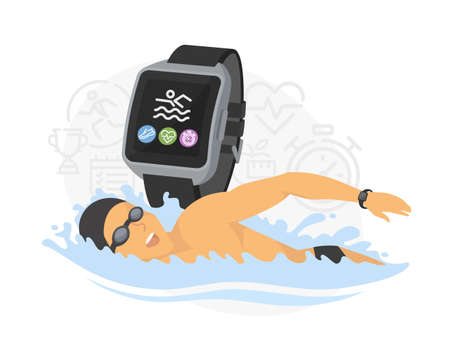Introduction to Hydrotherapy
Hydrotherapy, sometimes referred to as aquatic therapy or water-based physiotherapy, has long held a place in the management of various health conditions within the United Kingdom. Tracing its roots back to Roman Britain and Victorian spa towns, hydrotherapy has evolved into a respected therapeutic approach in modern UK healthcare. In today’s physiotherapy practice, hydrotherapy is commonly utilised for its unique properties that support rehabilitation and pain relief. The buoyancy, resistance, and warmth of water create an environment where patients with chronic pain can move with reduced strain on their joints and muscles. This gentle yet effective method forms an integral part of many physiotherapists’ toolkits across the NHS and private sectors alike, reflecting a commitment to holistic and patient-centred care.
Understanding Chronic Pain from a UK Perspective
Chronic pain is a complex and often misunderstood condition, affecting millions across the United Kingdom. Unlike acute pain, which serves as a warning signal for injury or illness and typically resolves within weeks, chronic pain persists for three months or longer and may continue even after the initial cause has healed. The National Health Service (NHS) recognises chronic pain not only as a physical sensation but also as an experience that can impact emotional wellbeing, relationships, and overall quality of life.
In the UK, it is estimated that around 28 million adults—almost half of the adult population—live with some form of chronic pain. This prevalence highlights the importance of effective management strategies tailored to the needs of British communities. The NHS prioritises addressing chronic pain as it often leads to increased healthcare usage, work absences, and a reduced ability to participate in daily activities.
Prevalence and Impact of Chronic Pain in the UK
| Aspect | Statistics/Insights (UK) |
|---|---|
| Adults living with chronic pain | Approximately 43% (28 million adults) |
| Impact on employment | Chronic pain is a leading cause of long-term sickness absence |
| Mental health implications | Higher rates of depression and anxiety among those affected |
| NHS priorities | Improving access to multidisciplinary care, including physiotherapy and hydrotherapy |
The Day-to-Day Reality for People Living with Chronic Pain
For many people in Britain, chronic pain can limit mobility, reduce independence, and create barriers to social engagement. Everyday activities—such as walking to the shops, gardening, or enjoying time with family—may become challenging. This persistent discomfort often requires individuals to adapt their routines and seek ongoing support from healthcare professionals.
NHS Approach to Chronic Pain Management
The NHS has increasingly emphasised a holistic approach in managing chronic pain, focusing on person-centred care that acknowledges both physical symptoms and their psychological effects. Physiotherapists play a key role in this strategy, working alongside patients to develop individualised plans that may include exercise therapy, self-management techniques, and complementary therapies like hydrotherapy. By understanding these unique challenges within the UK context, healthcare providers are better equipped to support individuals in reclaiming their quality of life.

3. Hydrotherapy Techniques Used by UK Physiotherapists
Within the United Kingdom, physiotherapists employ a variety of hydrotherapy techniques tailored to address chronic pain and support long-term wellbeing. The most widely used method is aquatic exercise therapy, which typically takes place in purpose-built hydrotherapy pools maintained at a warm temperature—usually around 34–36°C. This warmth, combined with the buoyancy of water, helps to reduce joint stress and allows gentle movement, making it particularly beneficial for those living with arthritis, fibromyalgia, and other persistent pain conditions.
Another commonly practised approach is graded exercise programmes within the pool environment. Physiotherapists often start clients with supported walking or range-of-motion exercises, gradually progressing towards resistance activities using equipment such as foam dumbbells or floats. These sessions are carefully individualised, taking into account each person’s mobility, pain levels, and confidence in water. The supportive environment also encourages relaxation, which can help break the cycle of pain and muscle tension.
Hydrotherapy in the UK is most frequently delivered in NHS hospitals, rehabilitation centres, or community health facilities equipped with accessible changing areas and hoists for safe transfer. Some private clinics also offer hydrotherapy services; however, waiting lists within the NHS can be lengthy due to high demand. Practical considerations include ensuring appropriate infection control measures, especially in shared facilities, as well as providing adequate supervision by trained physiotherapists to ensure safety and maximise benefit for each participant.
It’s worth noting that group-based hydrotherapy classes are popular among those seeking both physical improvement and social connection. These sessions foster a sense of community and shared encouragement, which can be just as important for emotional wellbeing as the physical gains achieved in water. Overall, the selection of techniques and settings reflects a personalised approach guided by both clinical evidence and compassion for those navigating the challenges of chronic pain in everyday life.
4. Benefits of Hydrotherapy for Chronic Pain Management
Hydrotherapy, or aquatic therapy, has garnered significant attention within UK physiotherapy circles for its multi-faceted benefits in chronic pain management. Both physiological and psychosocial mechanisms contribute to its efficacy, as supported by a growing body of evidence.
Physiological Benefits
The unique properties of water—buoyancy, hydrostatic pressure, viscosity, and temperature—work together to create an environment that reduces the impact of gravity on joints and muscles. This facilitates gentle movement and allows patients with chronic pain conditions to exercise with less discomfort compared to land-based therapies.
| Hydrotherapy Property | Physiological Effect | Pain Management Outcome |
|---|---|---|
| Buoyancy | Reduces joint load and supports body weight | Minimises pain during movement; enhances mobility |
| Hydrostatic Pressure | Promotes circulation; reduces swelling | Decreases inflammation and pain perception |
| Warm Water Temperature | Relaxes muscles; improves blood flow | Eases muscle tension; encourages flexibility |
| Viscosity/Resistance | Provides gentle resistance for strengthening exercises | Improves muscle tone without overexertion |
Psychosocial Benefits
The holistic approach valued in UK physiotherapy acknowledges that chronic pain is not solely a physical experience but also intertwined with emotional wellbeing. Participating in hydrotherapy sessions often takes place in a supportive group setting, fostering social interaction and motivation. The soothing qualities of water can reduce anxiety and promote relaxation, which are vital components in coping with long-term pain.
Mental Health Considerations
- Anxiety Reduction: The calming effect of warm water helps ease stress levels associated with chronic pain.
- Confidence Building: Achieving movement in water often boosts self-efficacy among participants, empowering them to manage their condition more proactively.
- Social Engagement: Group sessions provide a sense of community, which can alleviate feelings of isolation commonly experienced by those living with persistent pain.
Evidence from UK Practice
A number of NHS trusts and private clinics across the UK have reported positive outcomes for individuals engaging in hydrotherapy. Research indicates improvements in function, reductions in reported pain levels, and enhanced quality of life. These findings underscore hydrotherapy’s value as part of a comprehensive chronic pain management plan tailored to the needs of UK residents.
5. Challenges and Limitations in UK Practice
Despite the recognised benefits of hydrotherapy for managing chronic pain, UK physiotherapists often encounter several practical barriers that can limit its availability and effectiveness. One of the most significant challenges is access to suitable facilities. Many NHS trusts have seen hydrotherapy pools close due to maintenance costs or restructuring, leaving some regions without local options. Even where pools remain, limited scheduling slots and high demand can result in lengthy waiting lists, making it difficult for patients to receive timely interventions.
Funding constraints represent another substantial hurdle. Hydrotherapy is resource-intensive, requiring trained staff, ongoing pool maintenance, and appropriate infection control measures. Budget pressures within the NHS mean that hydrotherapy may not always be prioritised, especially when compared with other treatment modalities that are less costly or require fewer logistical considerations. This can lead to inconsistencies in service provision across different areas of the UK, creating a postcode lottery effect for patients seeking this form of therapy.
Patient suitability also poses important considerations. Not all individuals living with chronic pain are candidates for hydrotherapy; factors such as open wounds, certain cardiac conditions, or severe mobility limitations may preclude participation. Additionally, some patients may feel anxious about water-based activities or have cultural preferences that make group sessions challenging. Physiotherapists must carefully assess each individual’s needs and preferences, ensuring that hydrotherapy is both safe and aligned with their personal comfort levels.
These challenges highlight the importance of collaborative working between physiotherapy teams, commissioners, and local health authorities to advocate for accessible hydrotherapy services. While hydrotherapy remains a valuable tool in the management of chronic pain, addressing these practical barriers is essential to maximise its benefits for those who need it most.
6. Recommendations and Best Practices
Hydrotherapy has become an increasingly valued component in the management of chronic pain within the UK, especially when guided by physiotherapists with expertise in both aquatic therapy and local healthcare resources. Drawing on advice from UK physiotherapists, here are some practical recommendations for integrating hydrotherapy into chronic pain care, always considering individual patient needs and the unique context of British health services.
Assessing Suitability and Setting Goals
Before commencing hydrotherapy, physiotherapists stress the importance of a thorough assessment. This involves understanding each patients specific pain condition, physical limitations, and overall health profile. Setting realistic, measurable goals collaboratively ensures that hydrotherapy sessions remain focused and tailored to what is most meaningful for each individual—whether that’s improved mobility, reduced pain, or enhanced wellbeing.
Tailoring Sessions to Local Resources
UK physiotherapists recommend making use of local facilities—such as NHS hydrotherapy pools, community leisure centres, or even private clinics—to ensure accessibility. In areas where pool access may be limited, exploring partnerships with local gyms or adapting exercises for home-based water environments (like baths) can help bridge the gap.
Safety Considerations and Patient Comfort
Patient safety is paramount. It’s essential to check water temperature (typically between 32–35°C for therapeutic benefits), provide appropriate supervision, and adapt exercises to minimise fatigue or flare-ups. Encouraging open communication helps patients feel supported and reassured during sessions.
Promoting Self-Management and Continuity
UK physiotherapists often highlight the value of empowering patients to gradually take ownership of their hydrotherapy routines. Teaching simple aquatic exercises that can be performed independently fosters confidence and encourages ongoing engagement outside of formal sessions.
Cultural Sensitivity and Inclusivity
Given the diverse communities across the UK, physiotherapists advise being sensitive to cultural preferences regarding modesty, gender-specific sessions, or religious considerations around pool environments. Creating an inclusive atmosphere ensures everyone feels welcome and supported.
Collaborative Care and Ongoing Review
Regularly reviewing progress with patients and collaborating with multidisciplinary teams—including GPs, pain specialists, and occupational therapists—ensures that hydrotherapy remains integrated within a broader chronic pain management plan. By keeping communication channels open and adapting interventions as needed, UK physiotherapists create a compassionate, holistic approach to long-term pain relief.
7. Conclusion and Future Directions
Reflecting on the insights gathered from UK physiotherapists, it is clear that hydrotherapy remains a valuable component in the management of chronic pain. The buoyancy and warmth of water offer unique physical and psychological benefits, supporting gentle movement and fostering a sense of safety for those living with persistent discomfort. As we have explored, UK physiotherapists highlight not only the clinical outcomes but also the holistic improvements in confidence and well-being reported by their patients.
Looking ahead, there is much hope for the continued evolution of hydrotherapy within UK chronic pain services. Growing research evidence and collaborative practice may pave the way for more accessible and innovative aquatic programmes tailored to individual needs. Integration of digital technologies, such as virtual group sessions or remote support, could further bridge gaps in access, especially for those in rural communities or with mobility challenges.
While funding and resource constraints remain an ongoing concern, advocacy and patient stories can help underline the value of hydrotherapy to commissioners and decision-makers. By continuing to share best practices and building on the strong foundation established by dedicated physiotherapists across the UK, there is every reason to believe that hydrotherapy will remain a cherished option for those seeking relief from chronic pain.
Ultimately, the future lies in nurturing compassionate, person-centred care—where hydrotherapy is offered not just as a treatment, but as a gentle companion on each individual’s journey towards improved quality of life.


